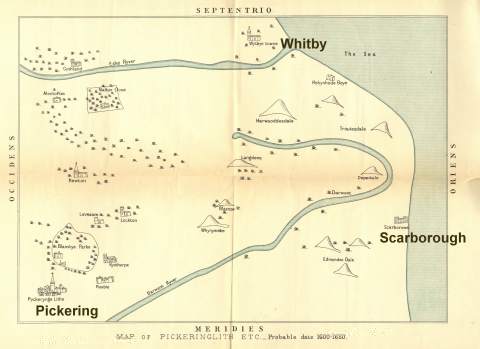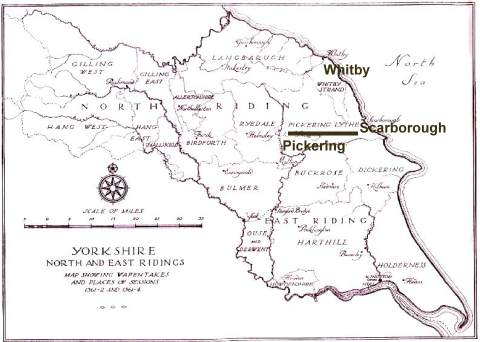Caught in the Middle
The king issued an invitation to his knights to join him at Stamford Bridge, equipped with horse and armor, to bring order to the realm.
The Boynton reaction: Good grief, caught in the middle of a family squabble.
It was a family squabble. Edward I had two sons. One became Edward II. The other, Edmund, received a big chunk of land in the north. That land became the Duchy of Lancaster, and he became the Duke of Lancaster. The first Duke of Lancaster pre-deceased his father [as they said], and his son Thomas became the second Duke of Lancaster. When Edward I died and Edward II became king the opposition was led by the Duke of Lancaster -- his brother's son. Family feuds were not then nor are they now unusual in the royal family, but they must be framed in terms of the good of the realm. This argument claimed undue influence by Gaveston and the need to reign in royal prerogatives. And it quickly spiraled into open conflict.
Open conflict was when the Boyntons found themselves caught in the middle. They -- Robert, John and Edmund -- joined the Duke of Lancaster. And that is the puzzle. Why side with the Duke of Lancaster? We cannot know for sure, of course. But we can get one step farther.
Lancaster is a county in northwest England. It shares some border with Yorkshire; England is only two counties wide at that point. However, Robert, John and Edmund lived in the East Riding of Yorkshire. They probably did not get to Lancaster very regularly. It was a considerable distance with less then speedy transportation.
The county was not all there was to the Duchy or to the influence of the Duke, however. The Honor of Pickering was part of the Duchy of Lancaster, and that was a big plot of land in the east of Yorkshire [Turton describes the honor and forest of Pickering].
 |
|
Map of the Honor of Pickering, Approximately 1600
|
 |
|
Yorkshire Map With Pickering Lythe Wapentake
|
The first map is the Honor of Pickering drawn about 1600. The second map is the North and East Ridings of Yorkshire. On it you can see the wapentake of Pickering Lythe -- which is, of course, not the whole of the Honor. They invented many ways of dividing up and labelling land in medieval England.
The Boyntons [of Boynton] had most of their land in the Dickering wapentake, which is just south of Pickering. However, they did have land in Pickering. John and Edmond were also cited as poaching in the Pickering Forest. The forest was close enough for them to use it for hunting (Turton, 1895).
The king and the duke were going at it, and you don't have the luxury of just watching. What do you do? One strategy: side with the one who is close and worry later about the other getting closer.
We do not know that is what the Boyntons did. We do know they sided with Thomas, duke of Lancaster. And we have gotten them closer together than "up north."
The rest of the story, told with a Boynton twist, is recounted in Forgiven [A Boynton Story: Forgiven].
....
Turton, Robert Bell (1895) The Honor and Forest of Pickering, vol. III, New Series, The North Riding Record Society, p. 67.